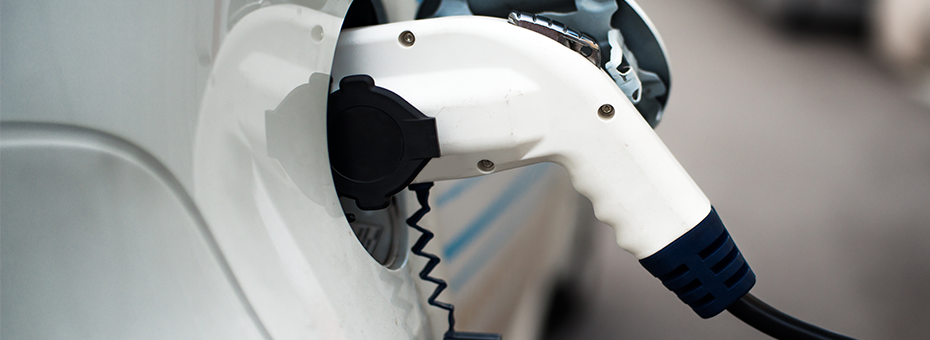How well do lean principles apply to the grueling challenge of launching a company—let alone launching a brand new automotive company?
That’s the key question discussed in last week’s podcast by Josh Howell and Matt Savas, with CEO R.J. Scaringe and former COO Jim Morgan of Rivian, an audacious venture producing electric adventure vehicles, the first of which will be available by the end of this year.
Ten years ago Rivian was conceived by Scaringe, who developed the company by tackling numerous challenges such as securing funding, hiring employees, developing the technology, proving the concept; all of which he tackled both iteratively and simultaneously, and all leading up to this year’s debut. Looking back on all the work needed just to position Rivian to start the work of producing cars, he said:
“We’re seeing this sort of orchestra starting to play. All the instruments are now there. You’re getting to see the music of what took a long time to get all the right pieces there,which I would say ten years ago, when I was first starting. It was not at all clear how you would go about arranging all the instruments for that orchestra to play music. It was like anything else. The only way to start was to start. Lots of U-turns, lots of twists, lots of turns, lots of gut punches. Overall, just brute force built it.”
Central to the company’s strategy is the flexible skateboard chassis, which is the underlying drivetrain of its vehicles. But it’s not just Rivian’s vehicles that will sit on top of the skateboard. 100,000 Amazon delivery vans, as well as numerous Lincoln SUVs, will soon sit on top of it. Scaringe revealed the skateboard architecture at LEI’s 2018 Designing the Future Summit. LEI will host similarly impactful product development leaders at its 2020 Designing the Future Summit June 18-19 in Traverse City, MI.
In this interview (a transcript of which can be found here), Scaringe details the dynamic challenges of scaling up the startup. Because the processes and systems that worked for 10 people no longer function for 50, 100, and many more, the company has had to redesign them constantly, always taking into account the new size and complexity of the venture. “As we’re scaling now, it’s designing processes that are as lightweight as possible, that streamline everything from how decisions are made to how capital is deployed to how we coordinate between different functions that we have geographically across a few locations, as well, so how do we coordinate across locations. That’s a constant state of process design while you’re flying the plane.”
R.J. and Jim also discuss the need to codify and communicate The Rivian Way, which they describe as an intentional effort to articulate their operating infrastructure, and to enroll every person in this shared culture in a way they can develop a sense of emotional and intellectual ownership. According to R.J., “our strength is the team. The team is a wonderful mix of people coming right out of college to people that have been working in the auto industry for 30 years, people that have been the technologist base since the early Apple days.”
This extended conversation anchors lean thinking deeply in one of the key streams of thought in today’s economy: how to build a new automotive company, and in so doing, focus beyond the power of any one product, focusing always on seeing the company itself as the most important output of the enterprise. Once again, according to R.J.: “It’s part of our culture to constantly be learning and to be open to learning and constantly checking your assumptions. I think it’s really important, not only for us as a company, but in this industry, with the rate at which things are changing, to be open to constantly learning and constantly reevaluating your assumptions.”
It’s important to see this substantive conversation as a window into the challenges and context of Rivian, and Rivian alone. And yet…it’s also impossible not to compare Rivian’s past with Elon Musk’s famous history with Tesla. Especially when you consider this R.J. quote: “The organization is actually the most important product we have. We could create a great first product, but if there’s not an organization that’s robust and built upon solid foundation sitting behind it, the second, the third, the fourth product, so to speak, won’t be there.”
Notable words to consider. For years LEI has addressed bold new ventures such as Tesla through lean frames, in a range of articles covering the future of mobility, the unsettling challenges facing established automakers, and the dynamic tension of maintaining an entrepreneurial culture in an increasingly large venture. If at times LEI has seemed to cast a critical eye on the pioneering work of Musk/Tesla, it is partly due to the apparently autocratic and controlling approach of the charismatic founder. Forbes explicitly contrasted the two leaders in their last issue framing Scaringe as Elon’s ‘new nemesis’.
Several LEI thinkers challenge Tesla (and Musk) on its commitment to designing robust, organic, improvable production lines. In Tesla Vs. TPS: Seeking the Soul in the New Machine, Jeff Liker says that, “Manufacturing is seen as a technical engineering problem and the solution is automation, automation, and more automation. We can’t imagine any of the great Toyota sensei asking: But where are the people?” He urges Tesla to learn from Toyota, and adopt a less mechanistic managerial approach. He says that a more organic approach is better suited to meet the challenges of a turbulent environment with rapidly changing technology and unprecedented uncertainty. Citing Toyota as a “learning organization with a long memory,” he calls for a more learning-oriented and people-focused production approach.
Such an approach to ramping up a new automobile company calls for a patient and well-planned leap into the production pool. In The Road to Production Hell is Paved with Lack of LPPD, Jim Morgan notes that the most important problems facing an ambitious launch must be addressed long before the first vehicle rolls off the line. At that point the company’s tools, fixtures, processes, part designs, interfaces, and requirements are all done, he says. What’s essential is that the ongoing work develop not just one product in isolation, but vigorous new value streams, ideally created in a structured and collaborative way through the obeya management system. “Designing, building and delivering great products is an enterprise activity that involves engineering, quality, marketing, manufacturing as well as key suppliers. And not as “some kind of bolt-on” activity, but as full partners with real equity and responsibility.”
Once again, most commentators on the opportunity in this field share their criticisms of Tesla far more in a spirit of disappointed fans than know-it-alls. This interesting back-and-forth between Jim Womack and Mark Donovan, in fact, rested on one key question: can an ambitious start-up (one with such colossal requirements in terms of resources, people, capital, etc) be fueled by the unlimited passion of the genius founder? Womack issues a plea for stability, and the two conclude that perhaps a pairing of Toyota execution with Tesla First Principles might be the best path forward.
In the past year Tesla stock has quadrupled, and now exceeds that of GM and Ford combined, certainly making a compelling case for the success of Musk’s “ludicrous mode” venture. Only time will tell whether the payoff will go to those who design operations to optimize learning over outputs. There’s no doubt that Elon Musk is a genius, and many of the doubtiest Tesla doubters rave about the delights of actually driving one. Yet Rivian represents a different genetic company makeup, one without a built-in aversion to reflection, learning, and adaptation; one whose growth rests on the team and not a brilliant founder racing around making heroic fixes to an ongoing string of catastrophes. The Toyota Production System, and lean, are about placing self-reinforcing systems improvement above the unsustainable practice of eternal point optimization.
It remains early to confirm some of the most ambitious aspirations about the nature of TPS and lean, specifically the enduring value of creating an organization that is fully committed to enduring performance through a top-to-bottom commitment to learning. The recent book The Lean Strategy argues that Toyota represents this approach, and that its famed tools serve as frames for learning that enable individuals to better understand a complex situation and find a better way of tackling a problem. In what is known by many as the “Thinking Production System,” point optimization (which rarely leads to deeper systematic gains) takes a back seat towards seeing problems as things to “fix” rather than opportunites to learn. “The TPS is, in essence, a vast mental scaffolding structure to teach people to think differently, working on the assumption that, as John Shook says, you don’t think yourself into a new way of acting, but you act yourself into a new way of thinking,” says Michael Balle, “The TPS defines challenges and exercises to help you understand your own business differently. It’s a learning method, not an organizational blueprint.”
The race ahead looms, and Rivian represents an intriguing new participant.




